Embark on an unforgettable journey through Bhutan's premier bird watching destinations. This Himalayan paradise is renowned for its pristine environments and diverse ecosystems, making it a perfect sanctuary for a variety of bird species, from the elegant Black-necked Cranes in Phobjikha Valley to the colorful Rufous-necked Hornbills in Zhemgang. Our meticulously crafted Bhutan Bird Watching Tours are designed to provide enthusiasts with an in-depth exploration of the country's rich avian life. Discover why Bhutan is celebrated as one of the Best Bird Watching Spots in Bhutan, where every corner offers a chance to connect with nature in its most untouched form.
Amen Bhutan Tours and Treks is recognized as the best company for exploring Bhutan's Top Bird Watching Spots. With our deep understanding of Bhutan’s unique ecosystems and commitment to providing exceptional travel experiences, we ensure that every bird watching tour is perfectly tailored to reveal the splendid diversity of avian life found across this Himalayan kingdom. From the serene marshlands of Phobjikha Valley to the lush forests of Zhemgang, our expert guides lead you through breathtaking landscapes to spot rare and endemic species in their natural habitats. Trust Amen Bhutan Tours and Treks to deliver an unparalleled bird watching adventure in the heart of Bhutan.
Phobjikha Valley
Phobjikha Valley stands out as one of Bhutan's premier destinations for bird watching, particularly renowned for its scenic landscapes and as a vital habitat for the Black-necked Cranes. Situated in the central part of Bhutan, this glacial valley offers a tranquil retreat into nature with its vast expanses of open marshland and gently rolling hills, ideal for these majestic birds that migrate here from the Tibetan Plateau each winter.
.jpg)
Highlights of Phobjikha Valley Bird Watching
- Black-necked Cranes: This valley is best known for hosting these elegant cranes from late October to early February. The birds are revered and celebrated in local culture, including the annual Black-necked Crane Festival, which is a major attraction.
- Diverse Avian Population: Besides the cranes, the valley is a habitat for other species such as the Yellow-rumped Honeyguide, the Ibisbill, and various types of Raptors, making it a hotspot for birders.
- Conservation Efforts: The area is highly protected with efforts led by local and international conservation bodies to ensure the sustainability of wildlife and their habitats. This has helped maintain the valley as an unspoiled location for bird watching.
- Photography Opportunities: The valley's stunning natural beauty, combined with its rich wildlife, provides ample opportunities for wildlife photography. The serene landscapes and the backdrop of distant snow-capped mountains create perfect conditions for capturing memorable shots.
- Hiking and Trekking: For those who enjoy combining bird watching with hiking, Phobjikha Valley offers several trails that allow you to explore the area's natural beauty on foot. These trails offer varying difficulty levels and provide different vantage points to observe the valley's bird life.
- Cultural Experiences: Visiting Phobjikha Valley also offers a chance to immerse in local Bhutanese culture. The Gangtey Monastery overlooking the valley adds a spiritual dimension to the visit, and the local community's lifestyle and traditions offer a deeper understanding of the region.
Phobjikha Valley is not only a haven for bird watchers but also for anyone seeking to connect with nature and experience the tranquility of one of Bhutan's most beautiful and ecologically significant areas.
Bumdeling Wildlife Sanctuary
Bumdeling Wildlife Sanctuary is a treasure trove of biodiversity located in northeastern Bhutan, covering an area that spans several climatic zones from alpine to subtropical. This sanctuary is a crucial site for bird conservation and a premier destination for bird watching, providing habitat to a variety of bird species including the revered Black-necked Cranes during the winter months.
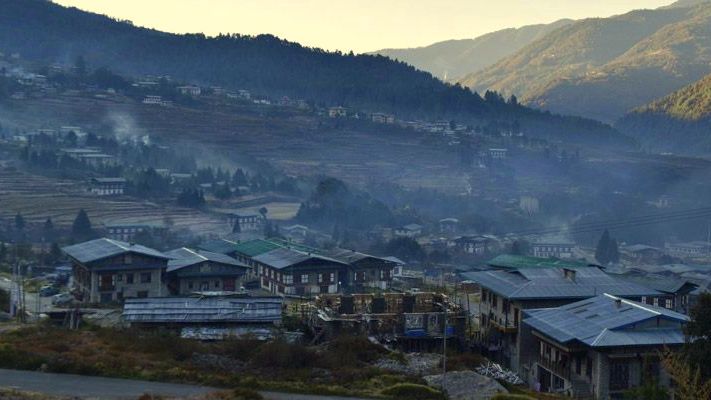
Highlights of Bumdeling Wildlife Sanctuary Bird Watching
- Black-necked Cranes: Similar to Phobjikha Valley, Bumdeling Wildlife Sanctuary is one of the winter homes for Black-necked Cranes in Bhutan. They typically arrive in November and stay until February, adding a significant attraction to the sanctuary.
- Diverse Avian Species: Apart from the Black-necked Cranes, the sanctuary is home to over 100 species of birds, including the Monal Pheasant, Blood Pheasant, and various species of raptors, making it a haven for bird enthusiasts.
- Rich Flora and Fauna: The sanctuary's diverse ecosystems support not only birds but also a wide range of wildlife, including the Red Panda, Snow Leopard, and Himalayan Black Bear. This diversity offers a comprehensive nature experience beyond bird watching.
- Cultural Integration: Bumdeling is also culturally significant, with several sacred and historic sites within its bounds. The blend of natural and cultural heritage enhances the visitor experience, providing insight into the local traditions and spiritual beliefs tied to nature conservation.
- Accessible Viewing Points: The sanctuary features several well-positioned viewing points and hides, which are ideal for observing wildlife without causing disturbance. These facilities make it easier for bird watchers to spend extended periods in comfort while waiting for the perfect sighting or photograph.
- Community Involvement: Bumdeling's management involves local communities, which play a role in conserving the habitat. This participatory approach not only helps in the sustainable management of the sanctuary but also provides economic benefits to the local people through eco-tourism.
- Educational Opportunities: For those interested in learning more about conservation and the specific challenges faced by wildlife in Bhutan, Bumdeling offers educational tours and programs that highlight the efforts being made to preserve this unique environment.
Bumdeling Wildlife Sanctuary is an exemplary site where conservation efforts meet the majestic beauty of Bhutan's wildlife. It is a must-visit for anyone passionate about bird watching and eager to explore the natural splendors of Bhutan while contributing to the preservation of its natural heritage.
Zhemgang
Zhemgang is renowned for its rich biodiversity and is considered one of the most important birding destinations in Bhutan. This region, characterized by its rugged terrain and diverse forested landscapes ranging from subtropical to temperate zones, offers a unique setting for bird watchers and nature enthusiasts.
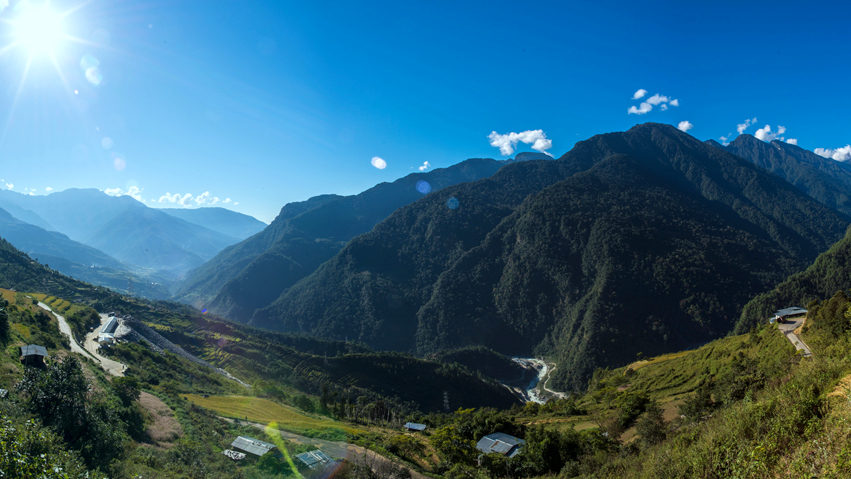
Highlights of Bird Watching in Zhemgang
- Diverse Habitat: Zhemgang's variety of ecological zones makes it an ideal habitat for a wide range of bird species. Its pristine forests are home to more than 22 species of globally threatened birds, making it a critical area for avian conservation.
- Endemic and Rare Species: The area is known for hosting several endemic species such as the Rufous-necked Hornbill and the Beautiful Nuthatch. It is also one of the few places in Bhutan where the critically endangered White-bellied Heron can be spotted.
- Birding Hotspots: Among the many hotspots, Tingtibi is particularly famous for bird watching. Here, enthusiasts can find exotic species like the Ward’s Trogon and the Blue-bearded Bee-eater alongside a plethora of other bird varieties.
- Conservation Efforts: Zhemgang is heavily involved in conservation projects, including community-led initiatives that protect the natural habitat while promoting sustainable tourism practices. These efforts are vital for maintaining the area’s ecological balance and supporting local livelihoods.
- Cultural Richness: Beyond its natural wonders, Zhemgang is also steeped in cultural heritage, with numerous ancient temples and monasteries dotted throughout the region. The cultural practices, deeply intertwined with nature, add an enriching layer to the bird watching experience.
- Guided Tours: To maximize the bird watching experience, guided tours are available. These tours are led by knowledgeable local guides who are familiar with the best spots and times for sightings, as well as being able to share insights into the behaviors and habitats of different bird species.
- Accessibility and Accommodations: While some areas in Zhemgang are remote, efforts have been made to improve accessibility, making it easier for tourists to explore the region. Eco-friendly accommodations and facilities cater to visitors, ensuring a comfortable stay while minimizing environmental impact.
Zhemgang’s combination of rich avian life, commitment to conservation, and cultural depth makes it a standout destination for bird watchers and nature lovers visiting Bhutan. Whether you’re an avid birder or a traveler seeking a serene natural escape, Zhemgang offers a compelling and rewarding adventure.
Tingtibi
Tingtibi in Zhemgang district is a lesser-known gem in Bhutan's rich tapestry of birdwatching locales, offering a unique experience for avid bird enthusiasts. Nestled in the subtropical zone of Bhutan, Tingtibi is renowned for its lush biodiversity and as a haven for some of the rarest bird species in the region.
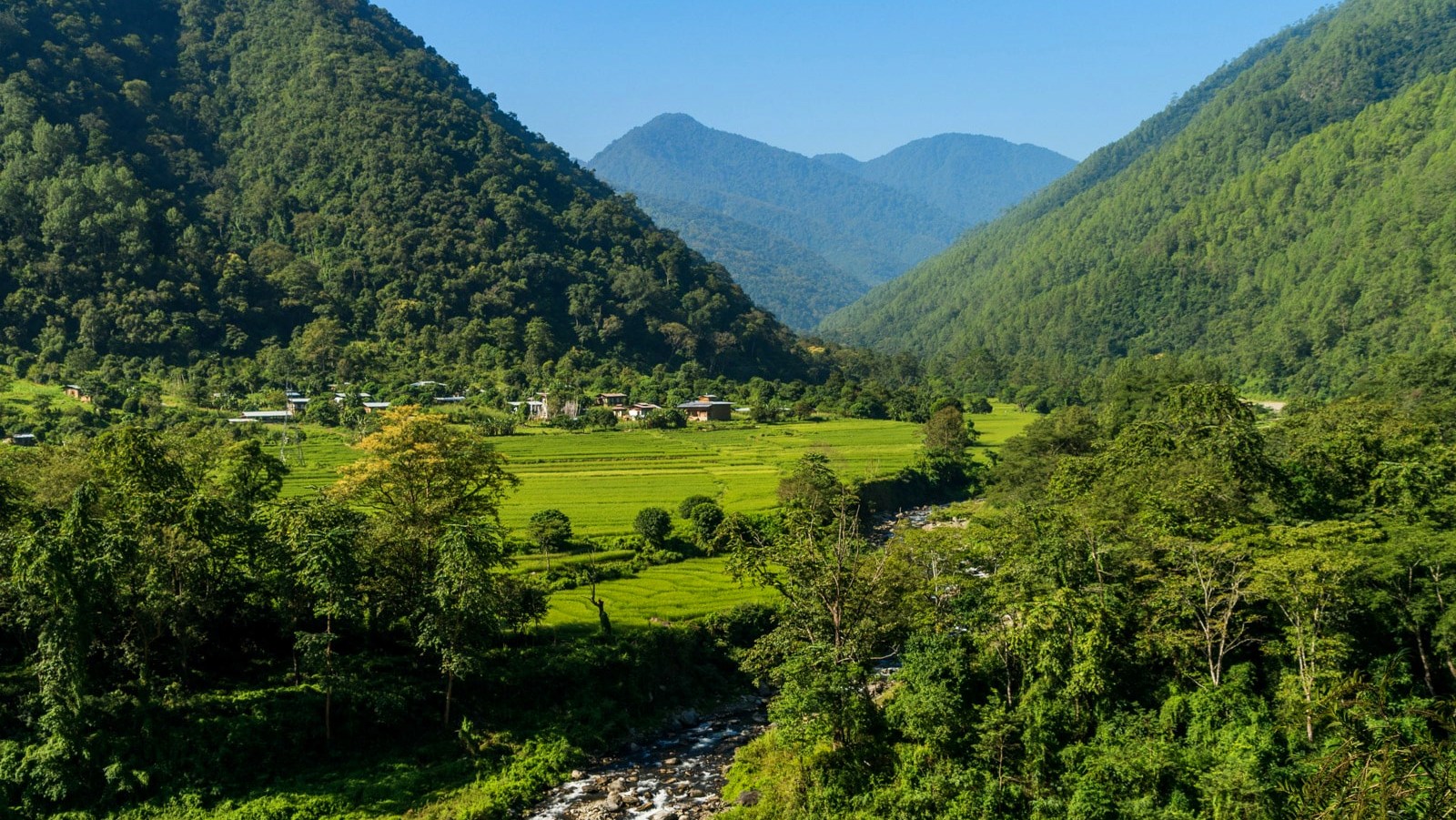
Highlights of Bird Watching in Tingtibi
- Rare and Exotic Bird Species: Tingtibi is celebrated for its diverse avian population, including some of Bhutan's most sought-after birds. It is one of the few places where birdwatchers can spot the elusive Ward’s Trogon and the vibrant Beautiful Nuthatch, alongside other exotic species such as the Blue-bearded Bee-eater and various types of hornbills.
- Ideal Birding Environment: The area's dense forests and warm climate create an ideal environment for birding throughout the year. The variety of altitudes and habitats supports a wide range of bird life, from lowland species to higher altitude dwellers.
- Conservation and Research Opportunities: Tingtibi is not only a hotspot for birdwatching but also a center for avian research and conservation efforts. These initiatives help protect the area's natural resources and ensure the sustainability of bird populations.
- Community Involvement: The local community plays a crucial role in the conservation of their natural heritage. By engaging in sustainable practices and supporting eco-tourism, they contribute to the preservation of their environment, making Tingtibi a model for community-led conservation.
- Photography Paradise: For wildlife photographers, Tingtibi offers unmatched opportunities to capture stunning images of rare birds in their natural habitats. The area's natural beauty, combined with its rich birdlife, makes it a perfect destination for those looking to add unique shots to their portfolios.
- Guided Tours: To maximize the sighting opportunities, guided bird watching tours are available. Local experts, familiar with the bird species and their behaviors, lead these tours, enhancing the experience by providing detailed information and ensuring the best chances of spotting the rarer species.
- Accessibility and Facilities: While remote, efforts have been made to improve the accessibility to Tingtibi, allowing more bird watchers and nature enthusiasts to explore this pristine area. Eco-lodges and other sustainable accommodations provide comfortable stays, further encouraging responsible travel and tourism in the region.
Tingtibi stands out as a premier birdwatching destination in Bhutan, offering a serene escape into nature coupled with the thrill of discovering some of the world's most exotic birds. Whether you are a seasoned birder or a nature lover looking to explore new areas, Tingtibi promises an unforgettable adventure in the heart of Bhutan's bird paradise.
Royal Manas National Park
Royal Manas National Park is Bhutan's oldest national park and one of the crown jewels of its conservation efforts. Located in the southern part of the country, bordering India's Manas Tiger Reserve, this park is celebrated for its stunning biodiversity and as a premier destination for wildlife enthusiasts and bird watchers alike.
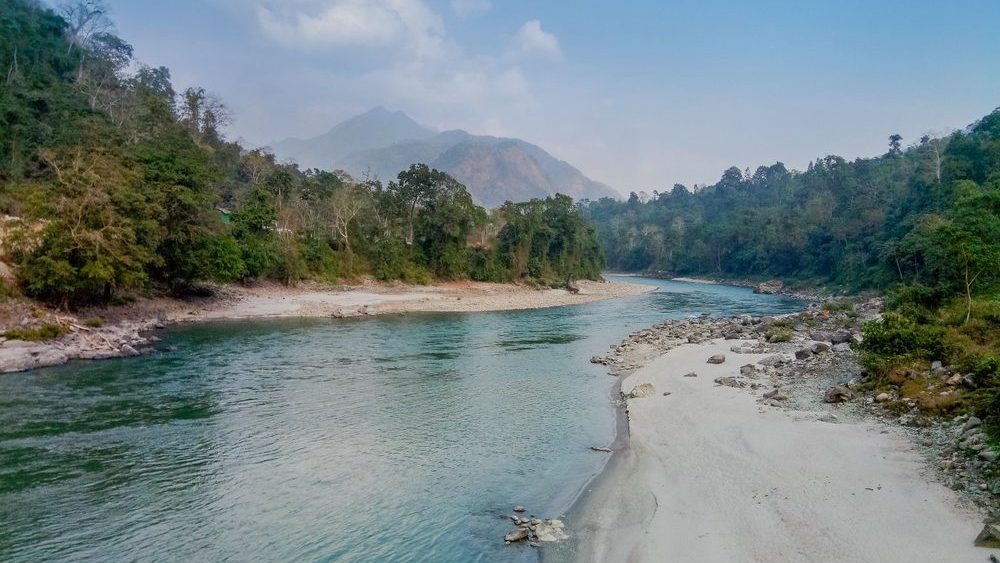
Highlights of Bird Watching in Royal Manas National Park
- Diverse Birdlife: Royal Manas National Park is home to an incredible array of bird species, making it a bird watcher's paradise. The park boasts over 365 species, including the rare Bengal Florican, the Great Hornbill, and the Beautiful Nuthatch. It provides a critical habitat for several endangered and vulnerable species.
- Rich Ecosystems: The park spans several ecological zones, from tropical and subtropical forests to riverine and grassland habitats, each supporting unique bird populations. This diversity allows bird watchers to experience a wide variety of bird sightings within relatively close proximity.
- Conservation Successes: As Bhutan's oldest national park, Royal Manas is a testament to successful conservation practices. Efforts here have helped protect not only birds but also other wildlife like tigers, elephants, and the rare golden langur, enhancing the overall health of the ecosystem.
- Sustainable Tourism: The park is a model for sustainable tourism in Bhutan, with well-managed safari tours and eco-friendly facilities that minimize human impact while maximizing visitor experience. Bird watching tours are carefully designed to respect wildlife while offering intimate glimpses into the lives of the birds.
- Cultural Integration: Visitors to Royal Manas National Park also have the opportunity to experience the rich cultural heritage of the region. The local communities are involved in the park's tourism activities, offering cultural performances and handicrafts, providing a holistic view of Bhutan's environmental and cultural landscape.
- Photography Opportunities: With its vast landscapes and abundant wildlife, the park is a fantastic spot for wildlife photography. Bird watchers and photographers can capture compelling images of rare birds in flight, nesting, or in the midst of their natural routines.
- Accessibility and Amenities: The park is accessible by road and offers various accommodation options ranging from camping sites to comfortable lodges. These facilities are designed to fit into the natural environment, allowing visitors to stay close to nature without sacrificing comfort.
Royal Manas National Park not only offers a sanctuary for birds and wildlife but also serves as a beacon of Bhutan's commitment to preserving its natural heritage. Whether you're a serious birdwatcher, a wildlife photographer, or simply a nature lover, the park provides an unparalleled opportunity to explore one of the most biologically diverse areas in the Himalayan region.
Chele La Pass
Chele La Pass is one of Bhutan's highest road-accessible passes, sitting at over 3,800 meters (12,500 feet) above sea level, nestled between the Haa and Paro valleys. This lofty pass provides not only breathtaking panoramic views of the surrounding mountains and valleys but also serves as a spectacular site for bird watching, especially for those interested in high-altitude species.

Highlights of Bird Watching at Chele La Pass
- Unique Alpine Avifauna: Chele La Pass is renowned for its unique high-altitude bird species. Birdwatchers can spot several notable species such as the Blood Pheasant, Himalayan Monal, and Kalij Pheasant, which are more commonly found in these higher elevations.
- Prime Birding Location: Due to its high elevation and the presence of both coniferous woodland and alpine scrub, Chele La Pass offers a unique habitat that is ideal for certain bird species. This makes it a prime spot for observing bird behaviors that are specific to these environments.
- Spectacular Scenic Views: The pass provides stunning views of the sacred mountain Jomolhari and surrounding peaks, creating a dramatic backdrop for bird watching and photography. The natural beauty of this area is truly unmatched, adding an element of awe to the birding experience.
- Accessibility: Despite its high altitude, Chele La Pass is relatively accessible via a well-maintained road from Paro, making it a convenient day trip for visitors staying in Paro or Haa. This accessibility allows even those with limited time in Bhutan to enjoy high-altitude bird watching.
- Photography Opportunities: For wildlife photographers, the combination of unique bird species and the stunning Himalayan landscape offers exceptional photographic opportunities. The clear air and open vistas allow for spectacular shots of the birds in their natural habitat.
- Seasonal Variability: Bird activity at Chele La Pass can vary with the seasons, offering different experiences throughout the year. Spring and early summer are particularly vibrant, with many birds in breeding plumage and active in their mating behaviors.
- Guided Tours: To enhance the bird watching experience, guided tours are available. These tours are led by knowledgeable guides who specialize in high-altitude birding and can help visitors spot and identify the various species found at Chele La Pass.
Chele La Pass is not just a passageway between two beautiful valleys but a destination in its own right for those interested in high-altitude birds and breathtaking natural scenery. Whether you are an avid birdwatcher or a nature enthusiast, Chele La Pass offers a memorable and enriching experience amidst the serene and majestic landscape of Bhutan.
Trongsa
Trongsa is a key district in central Bhutan, known for its commanding dzong which historically served as a vantage point controlling the kingdom’s east-west trade routes. Apart from its rich historical significance, Trongsa is also a noteworthy destination for bird watching, offering diverse habitats that are ideal for a variety of bird species.
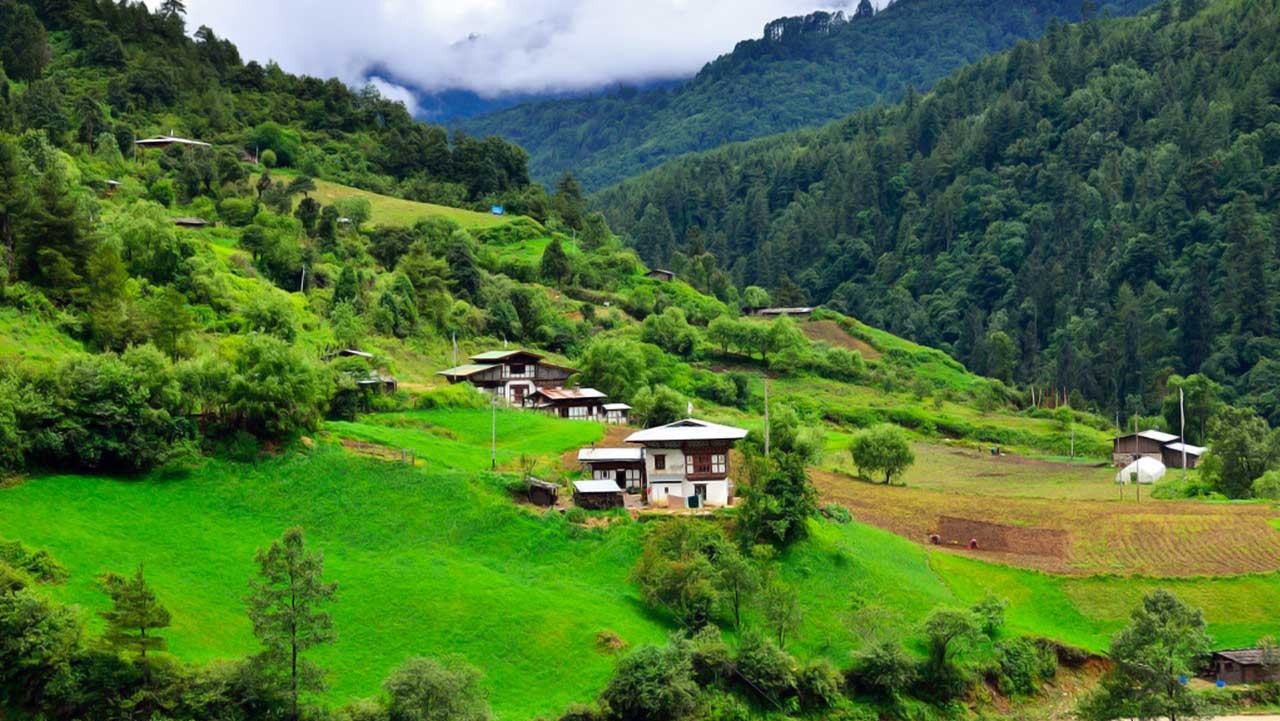
Highlights of Bird Watching in Trongsa
- Diverse Bird Species: Trongsa's varied elevations and habitats, ranging from lush subtropical forests to cooler alpine zones, support a rich array of bird species. Bird watchers can spot Satyr Tragopans, Himalayan Griffons, and various types of pheasants and partridges, among other species.
- Strategic Location: Trongsa’s central location in Bhutan makes it a pivotal area for bird migration routes, providing unique bird watching opportunities, especially during the migratory seasons.
- Trongsa Dzong: While primarily a historical and cultural landmark, the area around Trongsa Dzong is also a good spot for bird watching. The forests and cliffs surrounding the dzong are home to many birds, offering watchers glimpses of species like the Blue-fronted Redstart and the Grey-winged Blackbird.
- Conservation Efforts: The region's emphasis on conservation, aligned with Bhutan's overall environmental policies, ensures the preservation of natural habitats and promotes a healthy bird population.
- Photography Opportunities: Trongsa’s picturesque landscapes, combined with its diverse birdlife, make it an excellent location for wildlife photography. The serene environment and natural beauty provide perfect conditions for capturing stunning images.
- Accessibility and Facilities: Trongsa is well-connected by road and offers various amenities, including comfortable lodging options. This accessibility makes it easy for tourists to plan extended stays, immersing themselves in the local bird watching scene.
- Guided Birding Tours: For those keen on a detailed exploration, guided birding tours are available. These tours are led by experienced guides who are familiar with the local avian species and their habitats, enhancing the bird watching experience with their expert insights.
Trongsa not only offers a journey into the heart of Bhutan’s monastic history but also invites bird watchers to explore its rich natural tapestry. The combination of cultural depth and ecological diversity makes Trongsa a unique destination, promising an enriching experience for both avid birdwatchers and casual nature lovers alike.
Best Time for Bird Watching in Bhutan
The best time for bird watching in Bhutan depends largely on what you want to see and where you want to go, as different seasons offer unique opportunities to observe various species in their natural habitats. Here’s a breakdown of the best times to enjoy bird watching in Bhutan:
- Spring (March to May): Spring is arguably the best time to visit Bhutan for bird watching. During this period, the weather is pleasant with moderate temperatures, and the forests come alive with vibrant blooms. This season marks the breeding time for many species, making it an excellent opportunity to observe courtship displays and nesting behaviors. Migratory birds are also present, having arrived to take advantage of the abundant food sources. Key spots like Paro, Punakha, and Phobjikha Valley are particularly rewarding during spring.
- Summer (June to August): Summer, although marked by the monsoon with heavier rainfall, can still be a fruitful time for bird watching, especially in the northern regions of Bhutan which receive less rainfall. This is a good time for spotting residents and some summer migrants in lush, green settings. Areas like Bumdeling Wildlife Sanctuary and higher elevation zones can be particularly productive as birds move to higher ground to escape the heat in other parts of South Asia.
- Autumn (September to November): Autumn is another prime season for bird watching in Bhutan. The weather clears up after the monsoon, offering crisp, clear days ideal for outdoor activities. Many migratory birds begin their journey southwards, stopping over in Bhutan’s varied landscapes. This is a great time to observe a mix of late breeders and early winter visitors. The forests in areas like Thimphu, Trongsa, and Zhemgang are abuzz with avian activity.
- Winter (December to February): Winter is the best time to see winter migrants, including the majestic Black-necked Cranes in the Phobjikha Valley. Although it can be quite cold, especially in the higher altitudes, many of the lower and mid-elevation areas like Punakha and Wangdue Phodrang remain accessible and offer good conditions for bird watching. Birds tend to be easier to spot as they frequent lower elevations and water sources, and there are fewer leaves to obstruct views.
Each season in Bhutan offers distinct advantages for bird watchers, making it a year-round destination for observing the diverse and vibrant avian life that the country has to offer. Whether you’re an avid birder or a casual observer, Bhutan’s spectacular natural settings provide a memorable backdrop for this activity.
Travel Tips
Traveling can be an enriching and eye-opening experience, but it also requires careful planning and preparation to make the most of your trip. Here are some essential travel tips that can help ensure a smooth, safe, and enjoyable journey:
Research Your Destination
- Learn about local customs, culture, and etiquette to show respect and avoid unintentional offenses.
- Check for travel advisories or warnings related to safety, health, or political situations.
- Familiarize yourself with the local language by learning basic phrases if it's different from your own.
Plan and Book in Advance
- Book flights and accommodations early to secure the best rates and availability.
- Create a detailed itinerary that includes all your activities, transportation options, and downtime.
- Check visa requirements well in advance and make sure your passport is valid for at least six months after your planned return date.
Pack Smart
- Pack light to ease mobility and avoid extra baggage fees—aim to bring only what you really need.
- Use a packing checklist to ensure you don’t forget essential items like medications, chargers, or important documents.
- Prepare for the weather by checking the forecast and packing appropriate clothing and gear.
Manage Your Money
- Inform your bank of your travel plans to avoid any interruptions in card services.
- Carry a mix of cash and cards, and consider using a money belt or hidden pouch for security.
- Check exchange rates and understand the cost of things in your destination to budget effectively.
Stay Connected
- Invest in a local SIM card or global roaming plan to stay connected with family and to use map services.
- Download offline maps and translation apps which can be incredibly helpful in non-English speaking countries.
- Keep electronic and physical copies of your important documents accessible in case of emergency.
Follow Health and Safety Guidelines
- Get the necessary vaccinations recommended for your destination.
- Carry a basic first aid kit and any personal medication in your carry-on luggage.
- Follow local guidelines for safety, including dressing appropriately and adhering to cultural norms.
Be Flexible and Patient
- Travel often comes with unexpected delays and changes—maintaining flexibility can enhance your experience.
- Embrace local cultures and experiences—sometimes, unplanned activities turn out to be the most memorable.
Sustainable and Responsible Travel
- Respect wildlife and natural environments, avoiding activities that harm local ecosystems or endangered species.
- Support local economies by purchasing local products and services.
- Reduce your environmental impact by minimizing waste and conserving water and energy whenever possible.
By following these travel tips, you can minimize potential problems and maximize your enjoyment, making your travels as rewarding and stress-free as possible. Whether you’re a seasoned traveler or embarking on your first international trip, preparation is key to a successful adventure.
Bhutan's top bird watching spots offer a unique window into the kingdom's extraordinary biodiversity and commitment to conservation. From the enchanting Phobjikha Valley, known for its wintering Black-necked Cranes, to the rich avian habitats of Zhemgang and the remote allure of Tingtibi, each location presents a distinct birding experience set against the backdrop of Bhutan's stunning natural landscapes. Royal Manas National Park and Chele La Pass further highlight the ecological diversity and scenic beauty that make Bhutan a premier destination for bird enthusiasts around the world. Whether you are an avid birder or simply a nature lover, Bhutan's bird watching spots promise unforgettable encounters with some of the most spectacular and rare bird species on the planet, all within the peaceful embrace of this Himalayan paradise.
FAQs of the Bhutan’s Top Bird Watching Spots
Q: What are the best bird watching spots in Bhutan?
A: Some of the best spots include Phobjikha Valley, Bumdeling Wildlife Sanctuary, Zhemgang, Tingtibi, Royal Manas National Park, and Chele La Pass. Each offers unique bird species and beautiful natural landscapes.
Q: When is the best time to go bird watching in Bhutan?
A: The best bird watching season depends on what you want to see. Spring (March to May) and autumn (September to November) are generally the best times to see migratory and resident birds in vibrant plumage.
Q: Do I need a guide for bird watching in Bhutan?
A: While not mandatory, hiring a local guide can enhance your bird watching experience. Guides are knowledgeable about local bird species, their habitats, and the best times and places for sightings.
Q: What bird species can I expect to see in Bhutan?
A: Bhutan is home to a range of bird species including the Black-necked Crane, Satyr Tragopan, Rufous-necked Hornbill, Himalayan Monal, and various types of pheasants and eagles, among others.
Q: Are there any special permits required for bird watching in Bhutan?
A: While no special permits are required specifically for bird watching, you will need a tourist visa to enter Bhutan and may need permits to access certain protected areas. Your tour operator can arrange these for you.
Q: What should I bring for bird watching in Bhutan?
A: Essential items include binoculars, a bird guide book, a camera with a good zoom lens, appropriate clothing for varying weather conditions, and sturdy hiking boots.
Q: How can I respect wildlife and nature while bird watching?
A: Always maintain a safe distance from wildlife, stick to marked trails, avoid loud noises, and do not feed the birds. It’s important to leave no trace of your visit to preserve the natural habitats.
Q: Can I participate in any bird conservation activities during my visit?
A: Yes, some organizations and tour operators offer opportunities to participate in bird conservation activities such as habitat restoration and data collection. Ask your tour operator if such activities are available.
Q: What are the accommodation options near bird watching spots?
A: Bhutan offers a range of accommodations, from luxury hotels to eco-friendly lodges and camping sites, especially near popular bird watching areas. Booking in advance is recommended, particularly during peak seasons.
Q: Is bird watching in Bhutan suitable for children?
A: Yes, bird watching can be a fun and educational activity for children. However, it’s important to ensure they are prepared for the outdoors and understand how to behave responsibly in nature.
If you are looking for tour packages in Bhutan please click here
If you need any further information, please contact us, Email: at [email protected] , Phone (Whatsapp or Viber) +975-1755-6636
